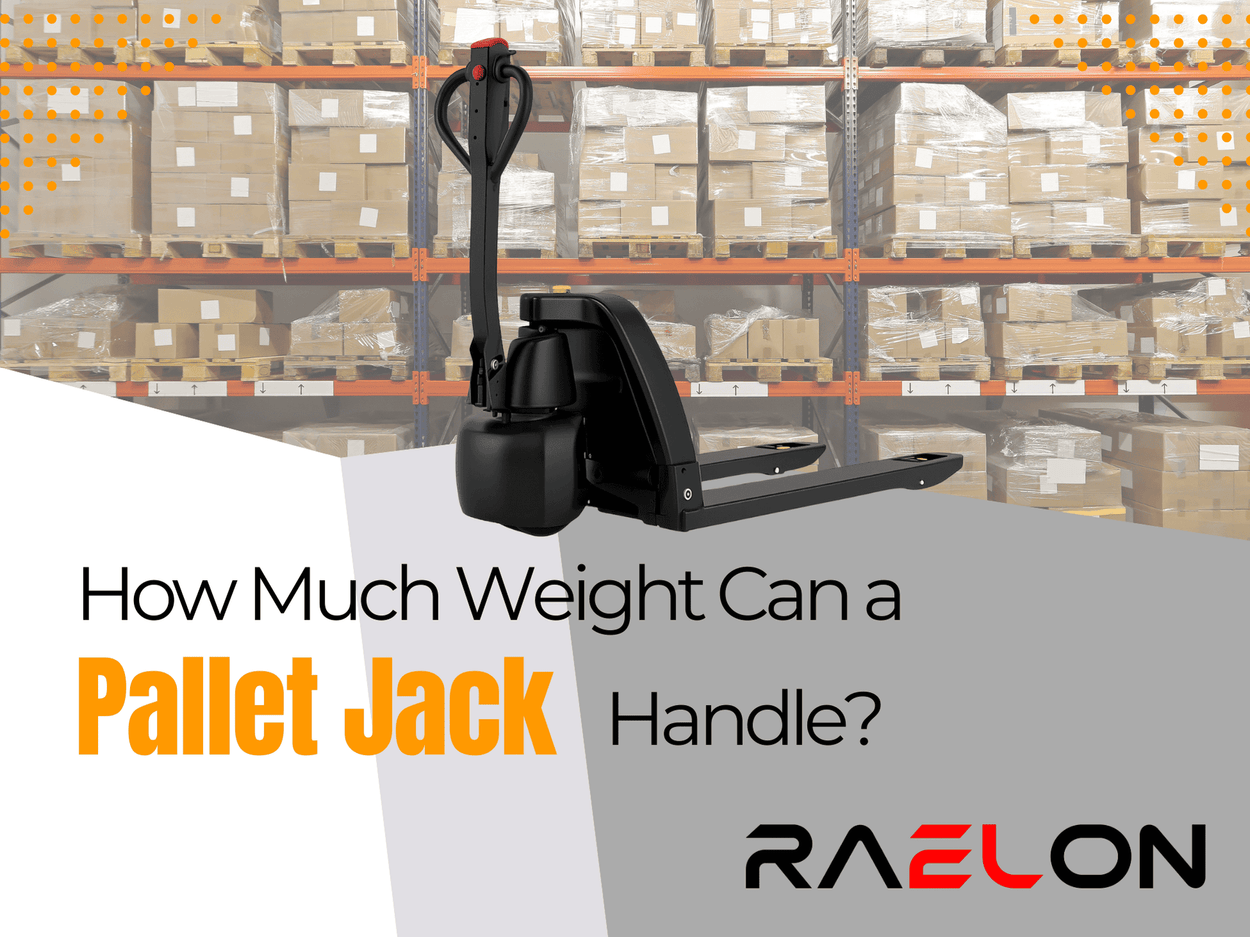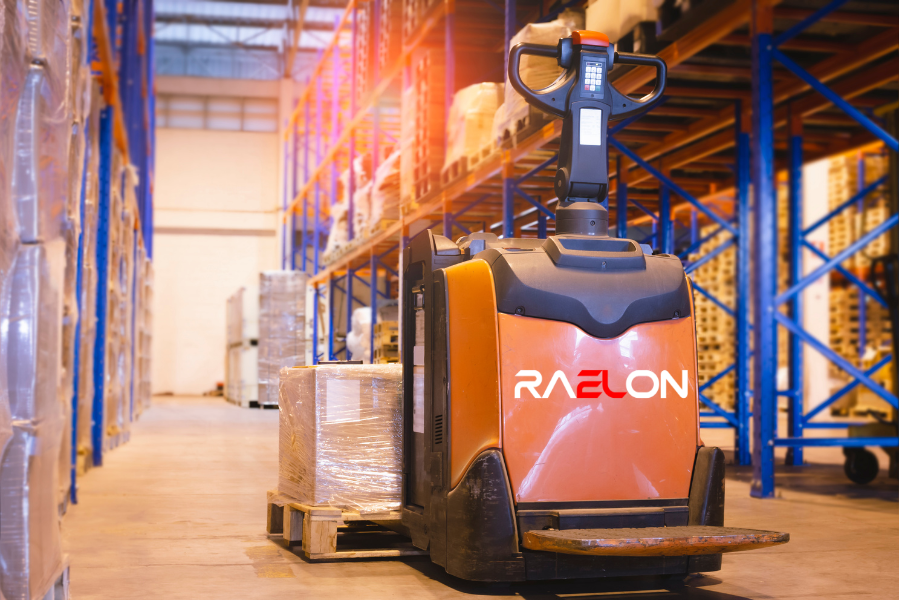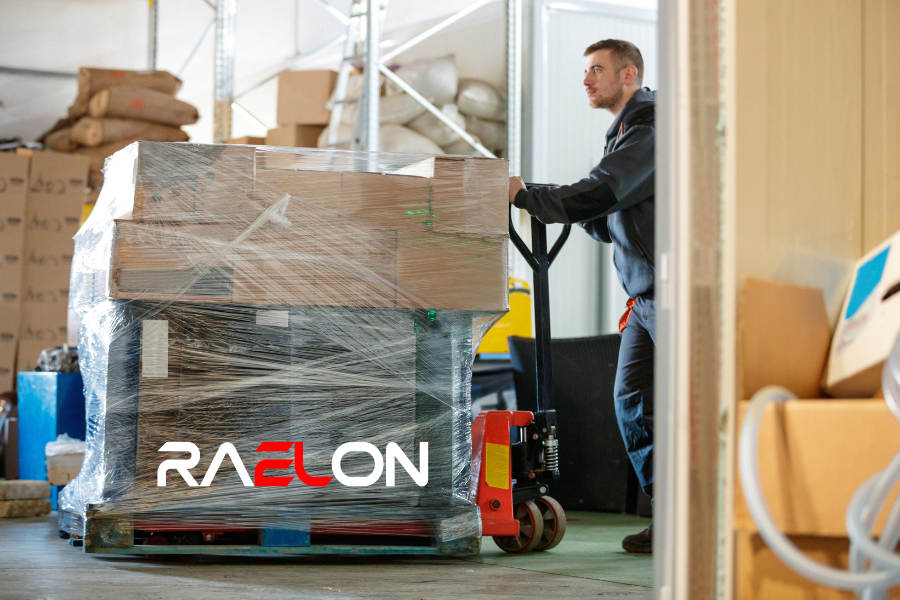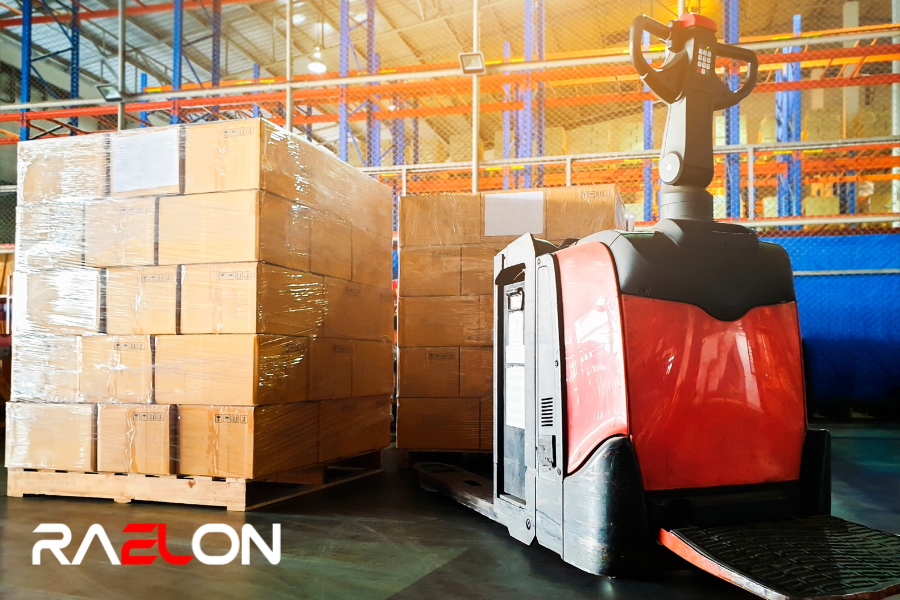When it comes to material handling equipment, one of the most common questions is simple: how much weight can a pallet jack actually lift?
Whether you’re managing a warehouse, operating a retail backroom, or running a busy distribution center, understanding load capacity is essential for both safety and efficiency. Exceeding the recommended weight limit can put employees at risk, damage valuable equipment, and even disrupt operations.
In this guide, we’ll explore both manual and electric pallet jack capacities, clarify typical ranges with up-to-date data, and help you understand why Raelon’s electric models (3,300–4,400 lbs) might be the smart choice for many operations.
What Does “Lifting Capacity” Mean?
Lifting capacity refers to the maximum load a pallet jack—manual or electric—is engineered to carry safely. Unlike forklifts, pallet jacks lift only a few inches off the floor. But lifting capacity remains critical, as it directly impacts workplace safety, equipment performance, and operational workflow.
Typical Manual Pallet Jack Capacity
Based on industry references:
-
Standard hand (manual) pallet jacks generally handle loads ranging from 3,000 to 5,500 lbs
-
Some reliable sources state manual jacks typically cover 4,500 to 5,500 lbs
Electric Pallet Jack Capacity: General Range
For electric (motorized) pallet jacks:
-
Many models span lifting capacities from 2,500 to 8,000 lbs, suitable for diverse warehouse applications
-
Typical capacities are in the 3,000–8,000 lbs range
-
Some electric units fall in the 4,500 to 6,000 lbs category
-
Large walkie electric pallet jacks (e.g., certain Toyota models) reach 6,000–8,000 lbs
Why Raelon Focuses on 3,300–4,400 lbs Electric Models
Raelon’s electric pallet jack lineup centers on 3,300 lbs models to 4,400 lbs models capacities, a range often overlooked in generic guides. Here's why many operations prefer these models:
-
Optimal for most daily pallet weights—these capacities suit typical warehouse and retail backroom loads.
-
Better maneuverability than ultra-heavy units.
-
Energy and cost-efficient—lighter frame and battery compared to higher-capacity models.
-
Clear safety margin for loads under 4,000 lbs, with the 4,400 lbs option covering occasional heavy pallets.
Manual vs. Raelon Electric
| Feature | Manual (Typical) | Raelon Electric (3,300–4,400 lbs) |
|---|---|---|
| Capacity Range | 3,000–5,500 lbs | 3,300–4,400 lbs |
| Effort Needed | Human-powered, physically demanding | Motor-assisted—minimal effort |
| Speed & Efficiency | Slower, operator fatigue | Faster, consistent performance |
| Safety & Control | Less braking control | Better braking, lift control, ergonomic handle |
| Cost | Low upfront, minimal service | Higher upfront, lower long-term labor costs |
Can a Pallet Jack Lift a Car?
The quick answer is no. Even though the average car weighs around 4,100 lbs, a pallet jack (manual or electric) isn't designed to lift a car safely—it doesn’t offer adequate support, stability, or lift point diversity. Using proper automotive jacks is essential. This rule holds for all pallet jacks, including those rated up to 5,000 lbs.
Factors That Impact Real-World Capacity
Even within rated limits, performance varies depending on conditions:
-
Floor conditions: Uneven or cracked floors increase rolling resistance.
-
Wheel wear & material: Worn or soft wheels reduce load control.
-
Load stability: Poorly stacked pallets raise tipping risk.
-
Battery/drive health (electric): Low power reduces torque and speed.
-
Inclines or thresholds: Ramps significantly affect push/pull effort.
-
Temperature: Freezer operations require cold-rated batteries and wheels.
Safety Tips When Using Raelon Electric Pallet Jacks
-
Always verify the manufacturer’s capacity label.
-
Never exceed rated load—even “just once” is risky.
-
Keep loads centered and stable on the forks.
-
Perform daily pre-shift checks: brakes, wheels, lift/lower function, battery.
-
Provide operator training, especially on stopping, cornering, and load handling.
-
Maintain equipment regularly to preserve performance and safety.
Final Thoughts
-
Manual units: Practical for lighter loads (~3,000–5,500 lbs), low-cost, but physically demanding.
-
Raelon electric units (3,300–4,400 lbs): Perfect blend of capacity, efficiency, and ergonomics for modern warehouses.
-
Heavy electric models (>6,000 lbs) are available but may be overkill for most needs.
Choosing within the 3,300–4,400 lbs electric range provides reliable daily performance and protects your team from fatigue and injury.
If you’re also curious about how high a pallet jack can lift, check out this guide.













